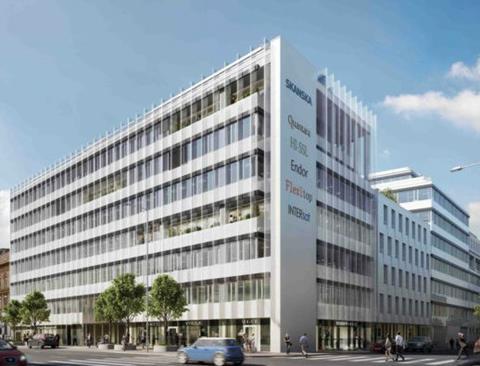Skanska is best known as the fifth largest construction company in the world, but its European development activities recorded the highest percentage growth in 2016.

The development business generated revenue of SEK 10.2 bn last year, up 13% on SEK 9 bn in 2015. The divestment gain, achieved from property sales, came to SEK 3.1 bn in the review period, surpassing the previous 'all-time high' in 2015, the company's president and CEO Johan Karlström said.
Overall, Skanska's infrastructure development business recorded the largest percentage change (124%), which catapulted revenues from SEK 106 bn in 2015 to SEK 237 bn last year.
Meanwhile construction, by far the largest business unit, generated revenues of SEK 138 bn last year, 2% down on the 2015 figure of SEK 140.6 bn.
Best performance in CEE
While all regions performed well, Skansa's development business had its best year so far in central Europe, according to Adrian Karczewicz, head of Commercial Development Europe (CDE), who spoke to PropertyEU during the CEE and Europe Outlook briefing in January.
'Of the three regions, CDE takes a big share in terms of overall volume of properties sold to different investors and for leasing,' Karczewicz said. 'In 2015 CEE accounted for 50% of sales by Skanska Development worldwide. That was a record year for us. And, it was a record year for our leasing activities too, with the 120,000 m2 leased accounting to 60-65% of the group total. The 2016 total – 166,000 2 - is even more for the four CEE countries.'
Between 60-70% of Skanska CDE is concentrated in seven cities in Poland: Warsaw, Krakow, Katowice, Wroclaw, Poznan and Tricity (Gdansk, Gdynia and Sopot).Skanska has entered the central Poliah city of Lodz and is also active in Prague, Bucharest and Budapest.
The company started five new projects, totalling 88,000 m2 GLA, in four CEE countries, for an investment of €167 mln. Skanska sold assets worth €211 mln and leased 166,000 m2 GLA. Projects ongoing during 2016 totalled 286,000 m2. The company started 2017 with up to 12 office buildings in the pipeline.
First investment fund
During 2016, Skanska TFI, the first investment fund management company in the Skanska Group worldwide, was created in Poland.
Residential development, covering the Nordic countries as well as Poland and the Czech Republic, saw an 8% positive change in revenues to SEK 13.26 bn.
Karczewicz: 'The business is really picking up in the Romanian and Hungarian capitals. We had a great year in Budapest in 2016. There was strong demand for our Nordic Lights office property (pictured) from all over Asia, the Middle East, the US, Western Europe and local institutions.'
Nordic Light
The commercial property development business creates green-certified office buildings in the Nordics, the US, and through the Commercial Development Europe sub-division, in Poland, the Czech Republic, Hungary and Romania.
In late December 2016 Skanska announced the sale of the Nordic Light office building to the asset and fund management arm of Austria's Erste Bank for €67 mln.
Nordic Light was Skanska's seventh office development in Hungary. The project, situated in the 13th district of Budapest, offers 26,200 m2 of total leasable space and underground parking floors.
The first phase comprises 6,600 m2, while the second phase comprises 19,600 m2 and was commissioned for use in September 2016.
'The Romanian capital Bucharest is lagging a bit behind Budapest in terms of yields,' Karczewicz said. 'Core yields in Budapest are at 6.25%, while Bucharest is on the negative side, 7.5%, when you compare core with core.'
Karczewicz indicated this will change. 'Such a spread of almost 150 basis points is too big a difference and we expect the market to pick up strongly in Bucharest,' he added.
In its combined Q4-2016 results report, the listed Swedish multinational reported total group revenues of SEK 151.3 bn (€16 bn) for 2016, 2% down on the previous year.
Nevertheless, profit for 2016 came to SEK 6.5 bn, an increase of 32% compared to the SEK 4.9 bn profit the year before.










